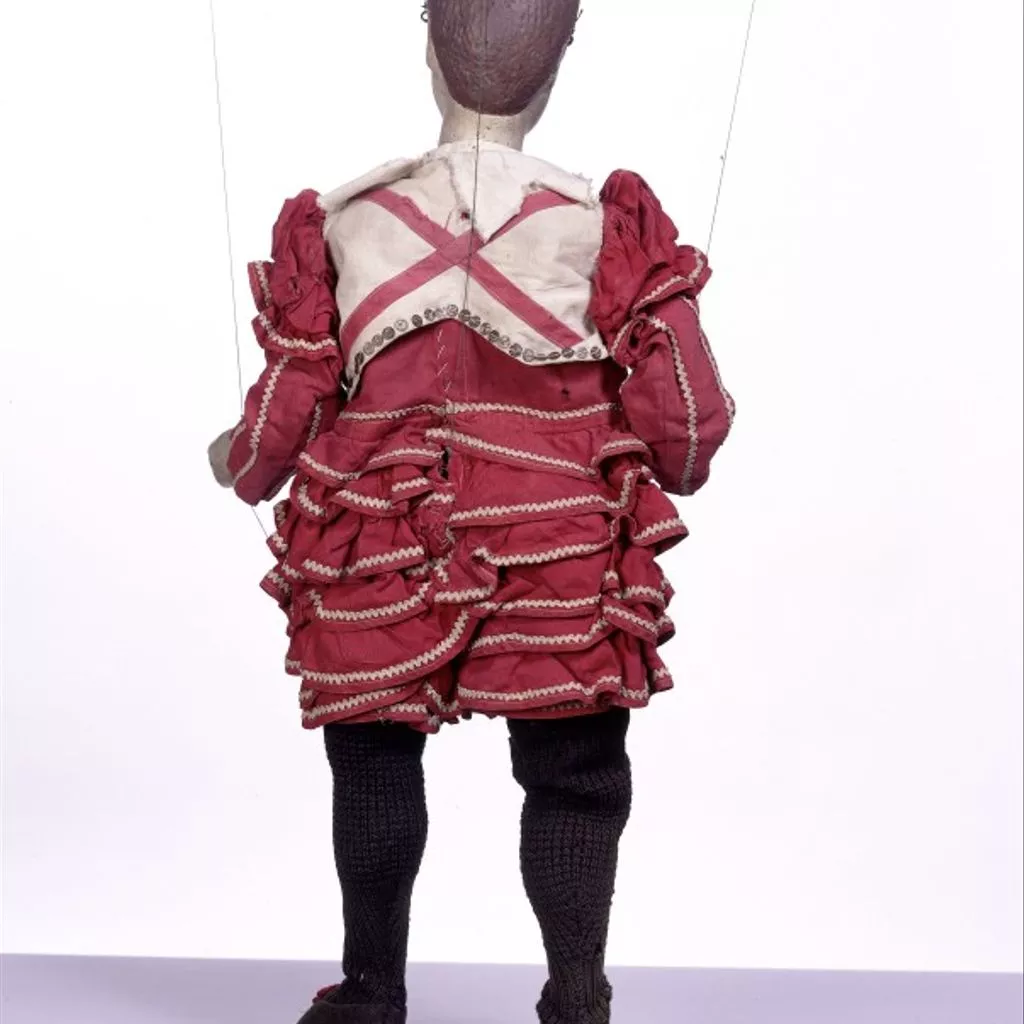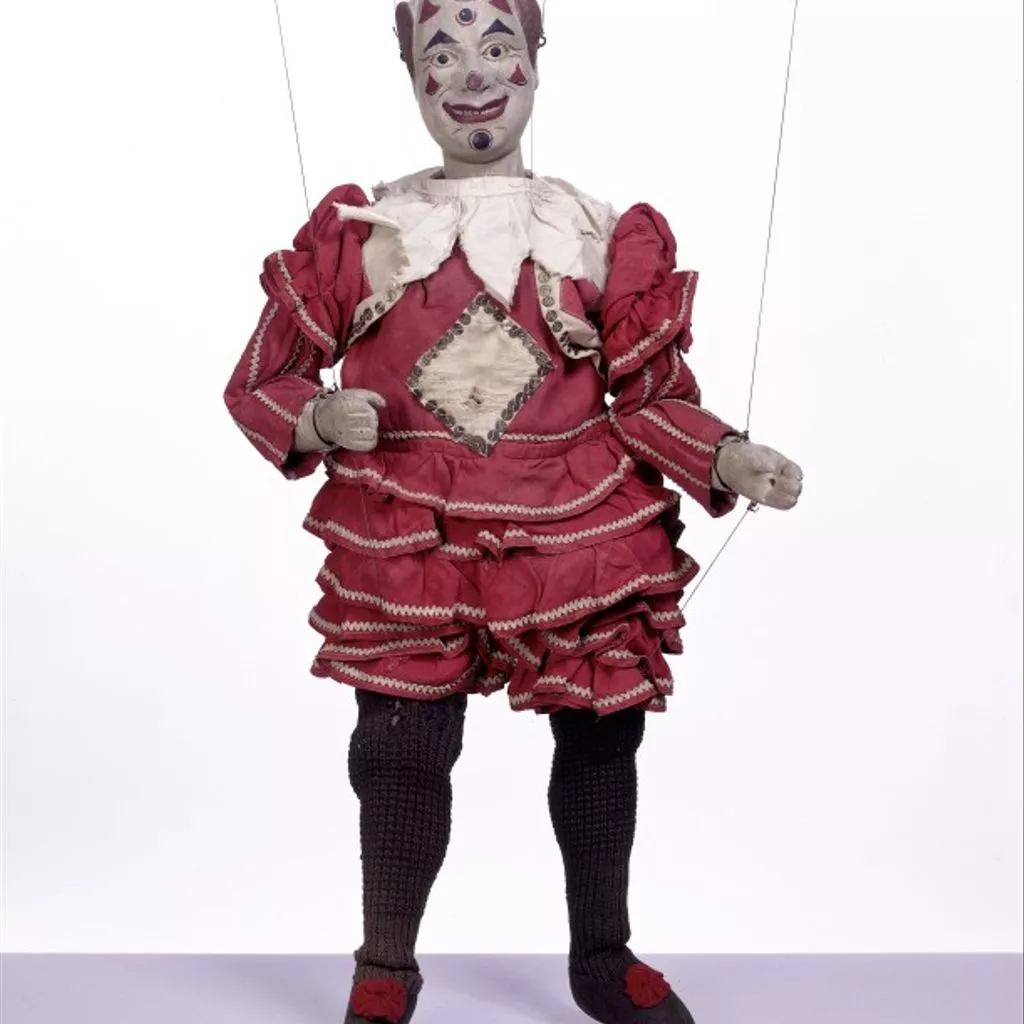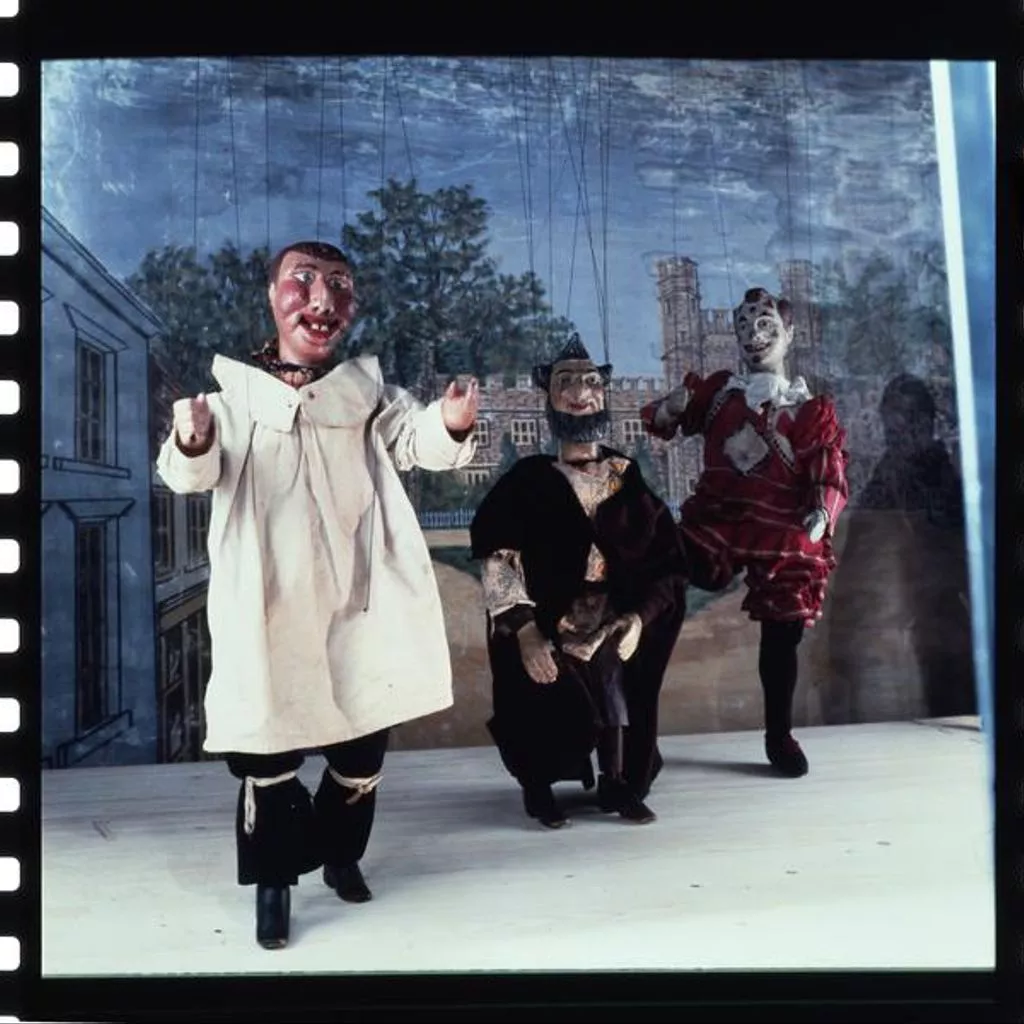Description
Unique
Carved wooden marionette in the form of a white-faced clown, possibly modelled after the famous early 19th century clown, Joseph Grimaldi. He is wearing a red cotton jacket and knickerbocker suit trimmed with white rick-rack braid, the knickerbockers with three flounces on each leg. The jacket had puffed shoulder sections with flounces above the elbows, below which are straight, fitted sleeves to the wrists. There is a white silk diamond-shaped panel edged with silver sequins as a central feature of the front of the jacket, and a silver sequins trim on his white cotton bolero waistcoat which is decorated with a red cloth diamond-shaped appliqué. There is a rather crude cotton ruff around his neck. He has dark green (possibly originally black) knitted stockings, and shoes trimmed with red wool rosettes.
He has carved hair with a central 'tuft' and a white painted face, decorated with clown's stylised make-up of red diamonds on the cheek, nose and temples, and black dots on his forehead and chin. His eyes have black painted dots for pupils, and stylised black painted eyebrows.
His hands are attached to his knees by strings for simultaneous movement, and there are therefore no separate knee strings. There is the remains of a staple in the palm of the right hand and a crude hole through the left hand. There is also a staple centre back between his shoulders (no longer in use) for a string. There is no stuffing in the body but an oval spacing disc, much as in the Cures (S.279 & S.280-1999) to allow some contraction. He has very short thigh sections, made of stuffed cloth tubes tacked to the pelvis, and lower legs with tongues fitting into hollows in the upper leg sections.
He is worked by two control bars, which are modern replacements.
Carved wooden marionette of a white-faced clown from the Tiller troupe, possibly meant to represent the early 19th-century clown Joseph Grimaldi. Made by the Tiller family circa 1870 to 1890.
This is one of 35 marionettes from the Tiller-Clowes troupe, one of the last Victorian marionette troupes in England. Marionette shows were a popular form of entertainment for adults in the 19th century, many of them family concerns which travelled around the country long before the advent of film and television, presenting shortened versions of London's latest popular entertainment from melodramas and pantomimes to minstrel shows and music hall. In the 18th and early 19th centuries their theatres were relatively makeshift, but after about 1860 many became quite elaborate, with walls constructed from wooden shutters, seating made from tiered planks of wood, and canvas roofs..
The figures were carved, painted, dressed and worked by members of the company. This is Clown, the outrageous character who developed from the Italian knockabout comedy called 'Commedia dell'Arte'. He was a familiar character in 19th century British pantomime, where he caused confusion and comedy in the harlequinade. Clown became an indispensable member of any marionette troupe, along with Harlequin, Columbine and Pantalone.








